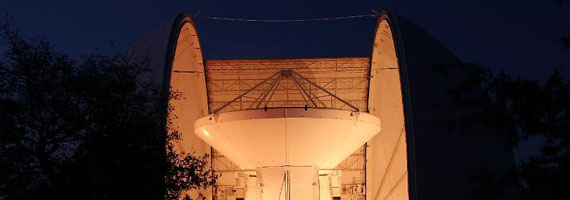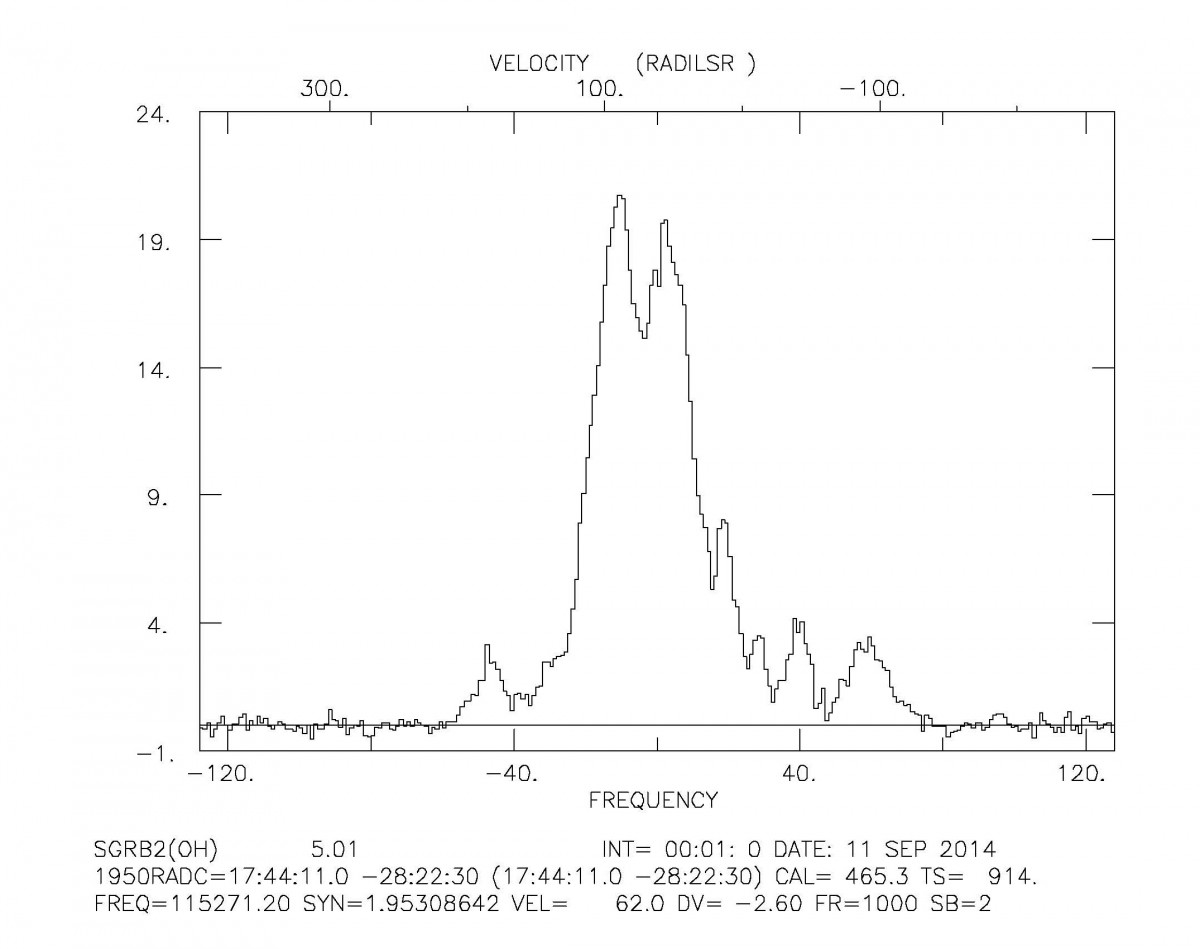
“First Light” with the new University of Arizona 12 m Radio Telescope
The official Oct 20 UA press release by Daniel Stolte can be found HERE.
A major step forward in astronomical capability for the University of Arizona took place last week when the first spectral line measurements were conducted with the new, state-of- the-art 12 m radio telescope of the Arizona Radio Observatory (ARO), part of the UA’s Steward Observatory. Radio wave emission from carbon monoxide molecules in several giant clouds of gas in our Galaxy was detected. “The results are truly outstanding given that these were the first observations ever made with a completely new and quite complex system” said ARO Director, Dr. Lucy Ziurys. “The entire team can be very proud of their achievement”
The new 12m telescope was installed in the existing ARO observatory building on Kitt Peak, replacing a venerable, but less capable antennae. One of the three prototype antennas built and tested for the Atacama Large Millimeter Array (ALMA) became property of the UA on March 23, 2013. The antenna, obtained through an agreement with the European Southern Observatory (ESO), uses the most advanced technology for the radio telescopes. Performance enhancing features include the reflector surface (dish) made from panels with a rhodium skin and an instrumentation cabin constructed from light-weight carbon fiber. The new antenna moves to point at new targets with a speed ten times faster than the previous 12 m telescope used by the ARO and points more accurately by a factor of twenty. The instrument was formerly located at the site of the Very Large Array (VLA) in New Mexico, where evaluation of the ALMA prototype antennas had taken place. Last fall the antennae was partially disassembled and shipped to Kitt Peak on two large transport vehicles by Precision Heavy Haul, a Phoenix-based company. The new instrument replaces the former ARO 12 m telescope, which the UA obtained from the National Radio Astronomy Observatory in 2000.
Recommissioning of the antenna took place over the past 8 months. Several miles of wiring had to be reconnected without any errors. Over twenty large electromagnets were remounted on the telescope for the direct drive motors and a special cooling system was renovated and put into operation for the instrument cabin. The telescope was first moved under its own power and using a new computer control system in mid-July of this year. In early September, the first detector system, the ALMA Band 3 dual-polarization receiver, was mounted on the telescope. The exciting “first light” observations occurred a few days later.
“These first light measurements not only prove that the new 12 m is fully functional for scientific observations, but also represent a huge leap forward for the ARO,” said Dr Ziurys, “I would like to thank everyone, on both sides of the Atlantic, who have contributed to making this possible”. The telescope will be used for a variety of scientific projects, aimed at understanding the myriad of molecules now known to exist in outer spaces and thought to play a major role in the formation of stars and planetary systems, including our own. It will also be a key element in the Event Horizon Telescope array that will create images of supermassive black holes in the centers of galaxies including the Milky Way. Scientific observations are expected to commence in October.
“I congratulate the entire ARO staff and Professor Lucy Ziurys for successfully bringing the instrument to this point in so short a time,” said Dr. Buell T. Jannuzi, Director of Steward Observatory. “We are all excited by the imminent start of science observations with this new modern facility.”

The “first light” data: spectral emission from the carbon monoxide molecule, CO, measured at the center of our Galaxy.

For Public
Public events include our Monday Night Lecture Series, world-reknowned Astronomy Camp and Mt Lemmon Sky Center.

For Students
A good place to start if you want to become an undergrad major or grad student, or need to find our schedule of classes.

For Scientists
Find telescopes and instruments, telescope time applications, staff and mountain contacts, and faculty and staff scientific interests.




